Opinion
I turned 50 and decided to become a backpacker again. Here’s what I learnt
Rob McFarland
Travel writerTurning 50 is one of those milestone events that can instigate all manner of plans and resolutions – many of which are a thinly disguised attempt to recapture some of youth’s carefree spontaneity. Some buy a sports car or take salsa lessons; others run a marathon or have an affair. I decided to go backpacking.
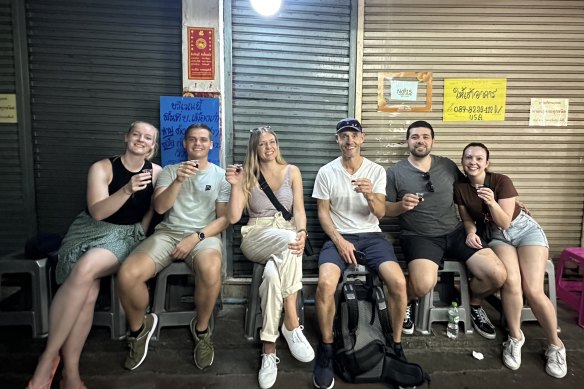
The author (third from right) on a food tour of Chinatown, Bangkok.
The last time I backpacked was a two-week stint in Thailand in my late 20s, so it seems appropriate to start there again. However, this time I will do a five-week loop that also includes Laos and Cambodia. Starting in Bangkok, I’ll follow the famous Banana Pancake Trail pioneered in the ’60s, heading north to the border with Laos, catching a boat along the Mekong to Luang Prabang, then tracking south into Cambodia before finishing back in Bangkok.
It’s a well-trodden path for graduates and gap-year students, but what’s it like tackling it in your 50s? Are there hostels for people who like being social but don’t want to share a 12-person dorm? How has the experience changed in the past 20 years? Are there other more “experienced” travellers to hang out with? And, most important of all, will it still be fun?
The most obvious difference between planning a trip today and 20 years ago is the blizzard of information that’s now available online, from blogs and booking engines to review sites and travel guides. After days lost in a quagmire of often-unreliable advice, I return to the trusted source I used during my previous trip: Lonely Planet.
At least I knew the information would be accurate, well-researched and well-written, even if it wasn’t the most up to date. Of course, this time, I downloaded the electronic guides onto my phone rather than lugging around the actual books.
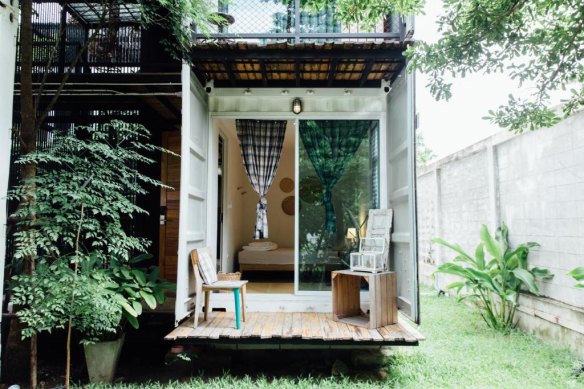
A private room with shared bathroom at The Yard, Bangkok.
Two more useful resources were southeastasiabackpacker.com and YouTube, which has instructional videos on everything from how to navigate border crossings to the best place in Bangkok airport to buy a local SIM card.
With this much information available, it’s all too easy to over-plan and miss out on one of travel’s greatest rewards: spontaneity. With only five weeks to play with, I knew I couldn’t completely wing it, so I sketched out a high-level itinerary but left the days unplanned so I could still follow my curiosity.
My trip is during September and October, the tail end of the wet season for most of South-East Asia. While this brings the occasional afternoon downpour, it also means fewer tourists, so accommodation is cheaper and more available. It soon becomes apparent that a private ensuite room in a hostel is almost always more expensive than one in a local guesthouse, so, aside from two nights at the start of my trip at The Yard, an excellent backpackers’ hostel, I stick to small hotels.
Before arriving at a new destination, I use booking.com or agoda.com to reserve the first night or two, then look around for alternatives or negotiate directly with the accommodation if I want to extend.
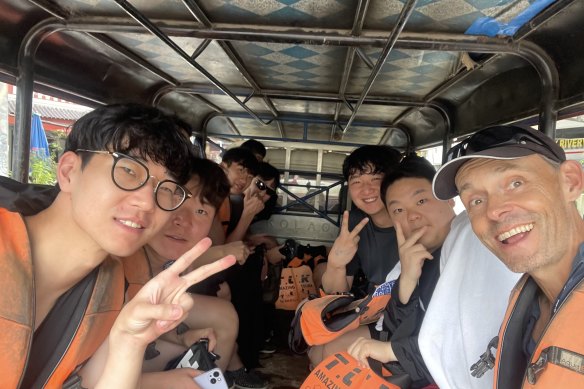
Travelling solo is the best way to meet other travellers.
Most of the big cities have free (aka tip-based) walking tours, which are perfect for getting your bearings and some initial recommendations. Then I use getyourguide.com and tripadvisor.com to research more specialist tours. Often it’s possible to find the website of the underlying operator and get a better deal by going direct.
Unsurprisingly, the most ground-breaking change from the last time I backpacked is having internet access on my phone thanks to cheap local SIMs. Google Maps is a lifesaver, not just for directions but also for attraction and restaurant reviews, as is Grab, the region’s most popular rideshare app. The website 12go.asia also proves invaluable for booking train and bus tickets.
The downside to all this technology is that it’s easy to squander your trip buried in your phone rather than interacting with people and appreciating the sights. It’s a perennial challenge for the modern traveller with no easy fix. One rule I find helps is no phone usage while eating or waiting for transport. It’s a simple edict that encourages me to be more present and engaged.
The merits of solo travel are frequently espoused – the freedom, the flexibility, the lack of compromise – but there are benefits to being an older traveller too. Not only are you more confident, capable and comfortable in your own skin, but you tend to care less about what anyone else thinks.
While visiting one of the picturesque blue lagoons outside Vang Vieng in Laos one day, I watch the interactions of a group of young English backpackers. The boys spend the morning showing off in an attempt to impress the girls, who seem far more interested in gossiping and getting the perfect selfie.
I remember those days and I don’t miss them for a second. With no one to entertain or impress, I’m able to savour the stunning beauty of the lagoon and its dramatic setting at the base of a soaring limestone escarpment.
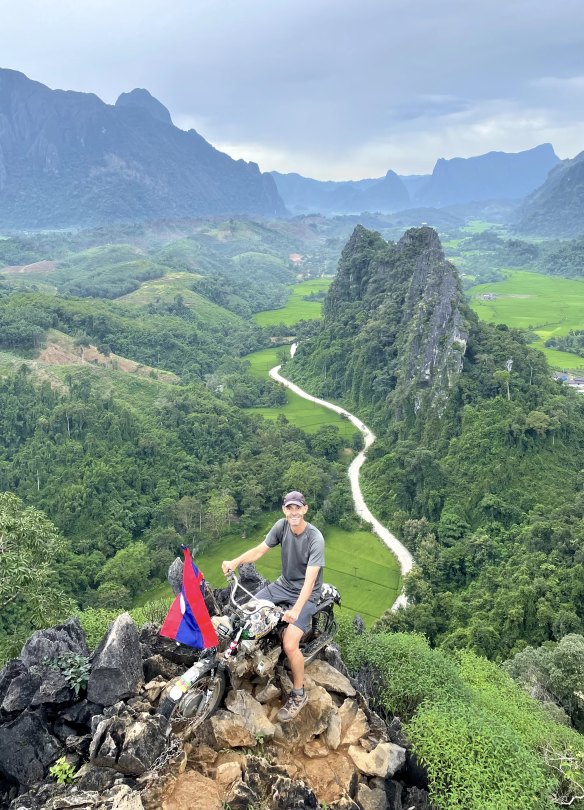
Savour the beauty of your surrounds without anyone to impress.
Older travellers normally have bigger budgets, so I’m able to jump in a cab when required, eat at nicer restaurants and splash out on the pricier experiences that are often the most memorable – such as a sunrise hot-air balloon flight over Vang Vieng’s dramatic mountainous landscape.
Rather than take the cheaper backpacker-crammed slow boat along the Mekong from Huay Xai to Luang Prabang, I upgrade to a more comfortable vessel with upmarket operator Shompoo Cruise and share it with just two other people, a delightful mother and daughter from Spain.
One disadvantage of travelling solo during the low season is that many tours require a minimum of two people to operate, so occasionally I miss out on an activity. Still, it feels like a small sacrifice for the intoxicating freedom and flexibility that comes with travelling on your own.
You don’t need me to wax lyrical about South-East Asia’s extraordinary bounty of attractions and experiences – from Thailand’s temples and Laos’ spectacular scenery to Cambodia’s ancient kingdoms and heartbreaking history.
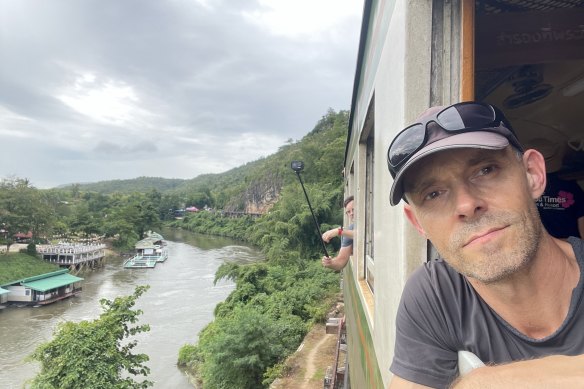
The most memorable parts of a trip can be the journeys themselves.
And while sites like the sprawling ruins at Ayutthaya and the temples of Angkor Wat are as impressive as I hoped, they aren’t my most treasured memories. My fondest recollections are of the journeys themselves, from the sticky clamour of a third-class rail carriage from Bangkok to Kanchanaburi, to the high-tech hum of the new Chinese-built fast train from Luang Prabang to Vang Vieng.
Another highlight is a pothole-dodging local bus trip from Chiang Rai to Chiang Khong with its frequent stops to collect everything from car parts to a karaoke speaker. Plus the cycle rides into Laos’ luminous green countryside to visit lagoons and waterfalls, past farmers shepherding clanking cows and through rustic villages with shy, waving children.
And then, of course, there are the entertaining interactions with an eclectic cast from all over the world. The illuminating hour-long discussion with Mop, a 20-year-old Buddhist monk living in Wat Chedi Luang temple in Chiang Mai. The bizarre conversation with an inebriated local policeman at a night market in Kanchanaburi, where he insists on showing me photos of his latest arrest.

The author, Rob McFarland, with Mop, a Buddhist monk living in Wat Chedi Luang temple in Chiang Mai, Thailand.
The German YouTubing couple who just arrived in Thailand after driving through every country in Europe. A nomadic yogi from Ukraine, a group of six chain-smoking young South Koreans, an aspiring Zambian influencer and an endearingly earnest Japanese man who joined me on a steep scramble up a Vang Vieng lookout. Most of them I won’t ever see again but some I already have. A German guy I met on a tour in Siem Reap has since visited me in Sydney. Now I have somewhere to stay in the city of Kassel.
As expected, most of the travellers I meet are in their 20s and 30s, but there are a few exceptions. On the very first night of the trip, I chat to an English couple in their 50s at the bar of The Yard hostel in Bangkok. Having fled England during the pandemic, they now live in Chiang Mai, which they use as a base for exploring the region. “We’re having the time of our lives,” said Andy. “If you have the means and the health, your 50s are a golden age for travel.”
The writer travelled at his own expense.
Sign up for the Traveller Deals newsletter
Get exclusive travel deals delivered straight to your inbox. Sign up now.